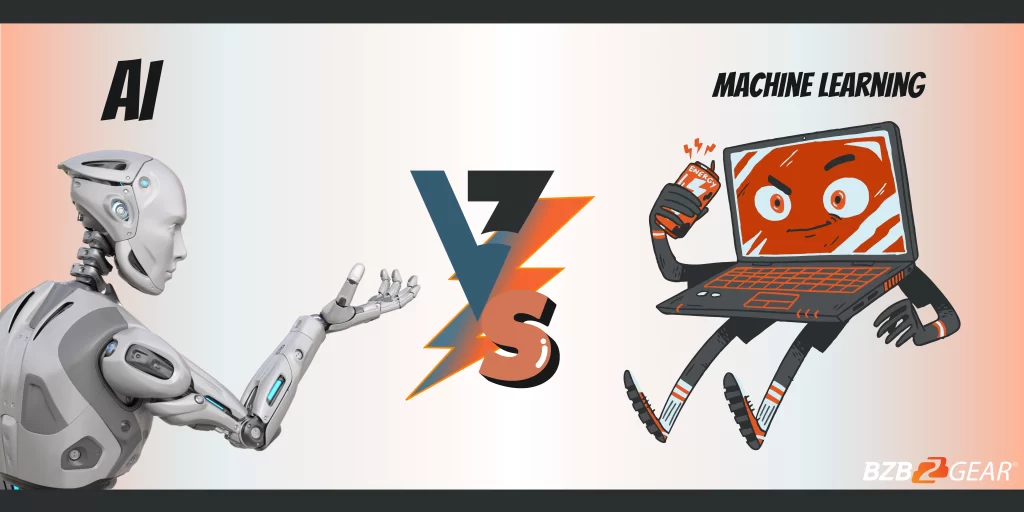Artificial Intelligence vs. Machine Learning Algorithms

In the realm of technology and computer science, two terms that often come up in discussions are artificial intelligence (AI) and machine learning (ML). While these concepts are closely related, they have distinct meanings and applications. To address the growing prominence of these subjects in everyday discussions, we have undertaken an exploration into the distinctions between AI and ML algorithms, elucidating their distinct attributes and examining their contributions to the advancement of intelligent machines.
Artificial Intelligence (AI)
Artificial Intelligence refers to a broad field of computer science that aims to create intelligent machines capable of emulating human-like intelligence. It encompasses a range of techniques and approaches designed to enable machines to perform tasks that typically require human cognition. These tasks may include speech recognition, problem-solving, decision-making, natural language processing, and more.
AI systems can be built using various methodologies, such as rule-based systems, expert systems, genetic algorithms, natural language processing, and computer vision. These techniques are employed to mimic human intelligence and simulate human-like behaviors.
Machine Learning (ML) Algorithms
Machine Learning is a subset or subfield of AI that focuses on the development of algorithms and statistical models. ML algorithms enable machines to learn from data and make predictions or decisions without being explicitly programmed. In essence, ML algorithms empower systems to improve their performance over time by processing and analyzing data iteratively.
Instead of following predetermined instructions, ML algorithms learn from examples and patterns within data. They extract insights, identify correlations, and make predictions based on the information they've been trained on. The more data they encounter, the better they become at making accurate predictions or decisions.
Distinctions between AI and ML
While AI is the overarching concept that encompasses any technology or system exhibiting intelligence, ML is a specific approach within AI. Here are the key differences between the two:
Scope: AI encompasses a wide range of techniques and methodologies aimed at creating intelligent machines. ML is one of those techniques, that focuses on enabling machines to learn from data and improve their performance without explicit programming.
Learning Capability: AI systems can learn and adapt using various techniques, including ML. ML algorithms specifically rely on data to learn and improve their predictions or decisions over time.
Human-like Intelligence: AI aims to simulate human-like intelligence in machines, allowing them to perform tasks that typically require human cognition. ML algorithms, while not necessarily human-like, excel at pattern recognition and making predictions based on learned information.
Programming vs. Learning: Traditional AI systems are programmed with explicit instructions and rules to perform tasks. ML algorithms, however, learn from data and adjust their behavior based on patterns and insights derived from that data.
Final Thoughts
In summary, artificial intelligence (AI) and machine learning (ML) are related concepts, but they have distinct meanings and applications. AI is a broad field that encompasses any technology or system capable of simulating human-like intelligence. ML, on the other hand, is a subset of AI that focuses on algorithms and statistical models, enabling machines to learn from data and improve their performance over time.
Both AI and ML play crucial roles in the development of intelligent machines. While AI enables machines to exhibit intelligent behavior, ML algorithms provide the means for machines to learn and adapt based on data. By understanding these distinctions, we can appreciate the different approaches employed in creating advanced technological solutions and systems.
Remember, AI is a vast field with many exciting applications, and ML is just one piece of the puzzle. As technology continues to evolve, the boundaries between these concepts may further blur, leading to even more innovative advancements in the future.
8.00 a.m. - 5.00 p.m. (PST)
10.00 a.m. - 3.00 p.m. (PST)
(by appointment only)



